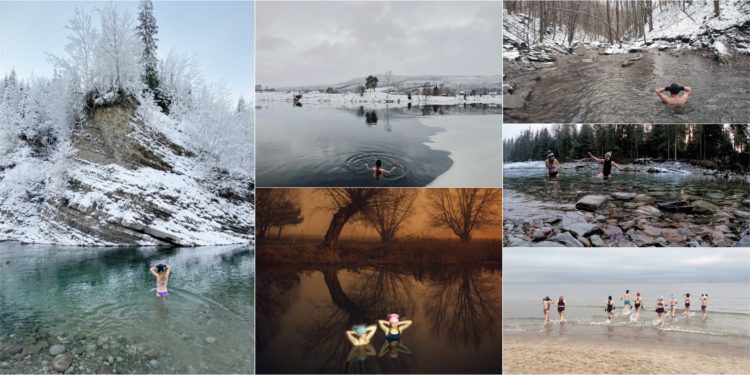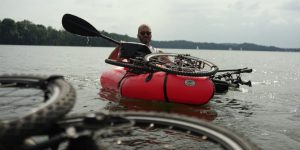
OM guide: walruses
Walrushing, or immersion of the body in cold water. If we do not have health problems, we can do it at any time. However, it is worth remembering some basic safety rules. Here’s another OM guide – this time walrushing.
Who can walrus?
In principle, any healthy person, regardless of age. People with cardiac problems, epileptics, people with hypertension and diseases of the cardiovascular system, respiratory tract and brain should not walrus. Some doctors also do not recommend walruses for people with Lyme disease. Before the first walruses, it is wisest to schedule an individual consultation with a doctor. Regardless of the contraindications, you should not walrus in case of colds and infections.
Walruses should not be used by very thin people
It’s a myth. You can walrus regardless of your body weight, although in fact, people with more body fat will be able to stand in the cold water longer, especially at first.
When to walrus?
There are two theories. Proponents of the former believe that cold baths are good to get used to gradually, as temperatures drop from autumn to winter. According to them, in this way it is easier to start equating walruses with pleasure.
According to the second theory, with the first walruses it is better to wait until the lakes freeze over. Bathing in an ice hole is certainly a greater adrenaline rush, the wintry environment and lack of previous experience heighten the experience. Walrus veterans do not believe that this approach involves greater risks.
As a general rule of thumb, the greater the difference between water and air temperature, the greater the pleasure.
Where to walrus?
Preferably in a familiar place, where you bathe in the summer. Sea, lake, calm floodplain of a river – it is important that the water is not deep. If you are going to plunge into the air hole, be sure to check the depth of the water with a stick. Just make sure that the water is up to your waist – crouching you will submerge up to your neck, and the exit will be easy. Getting out of an ice hole, in case we do not have support for our legs, can be very difficult, and in an emergency situation impossible – it is worth remembering this.

Walruses in Norway – OM guide: walruses (photo. Marta Mytych)
Hardening at home
It is not necessary, but it can make it easier to enter an icy lake for the first time. Regular bathing, preferably daily, in water at a temperature of approx. 10°C reduce the likelihood of thermal shock.
With whom to walrus?
Best with friends, but it would also be a good idea to join a local club or a group of more experienced walruses. Don’t walrus alone – especially at the beginning, when you’re not sure how your body will react.
Outfit/equipment
Walruses do not require specialized equipment. Basic clothing is a bathing suit, cap, scarf and gloves. Also remember to bring a towel, warm clothes before and after, and a thermos of hot tea. A blanket can also come in handy at the lake. The only part of the closet that is unlikely to be found at home is neoprene shoes. They are not necessarily needed, but it is worth taking at least flip-flops, especially if we will be walking on ice or snow. A sturdy axe will also come in handy when swimming in the ice hole.
Before entering the water
A very important stage of walruses is warming up. Before entering the water, we run, do squats, push-ups and jumping jacks until we feel the heat. In the second phase of the warm-up, gradually take off your clothes.
Hands down!
Upper extremities are susceptible to rapid cooling. In the beginning, it is best not to allow them to be submerged. Gloves, hat and scarf – these things we do not take off when entering the water. In the water, we should not stand motionless.
How long to last?
Listen to your body and do not force yourself to break records, at least at first. People vary greatly in their resistance to cold. The first walruses can last just a few seconds. The sensations will be extreme anyway. Different sources give different maximum times for beginners – the average is 5 minutes. We finish bathing before we start to feel the effects of the body’s hypothermia. In the beginning, we can follow the rule: how many degrees the water is, how many minutes max we stay submerged (1°C = max. 1 minute etc.). This way, the body should not get chilled.
After getting out of the water
Wipe your body with a towel and get dressed quickly. You have five minutes, procrastinating you may not be able to e.g. tie your shoes. Drink warm tea and move around to warm up the body. After returning home – a hot bath.


